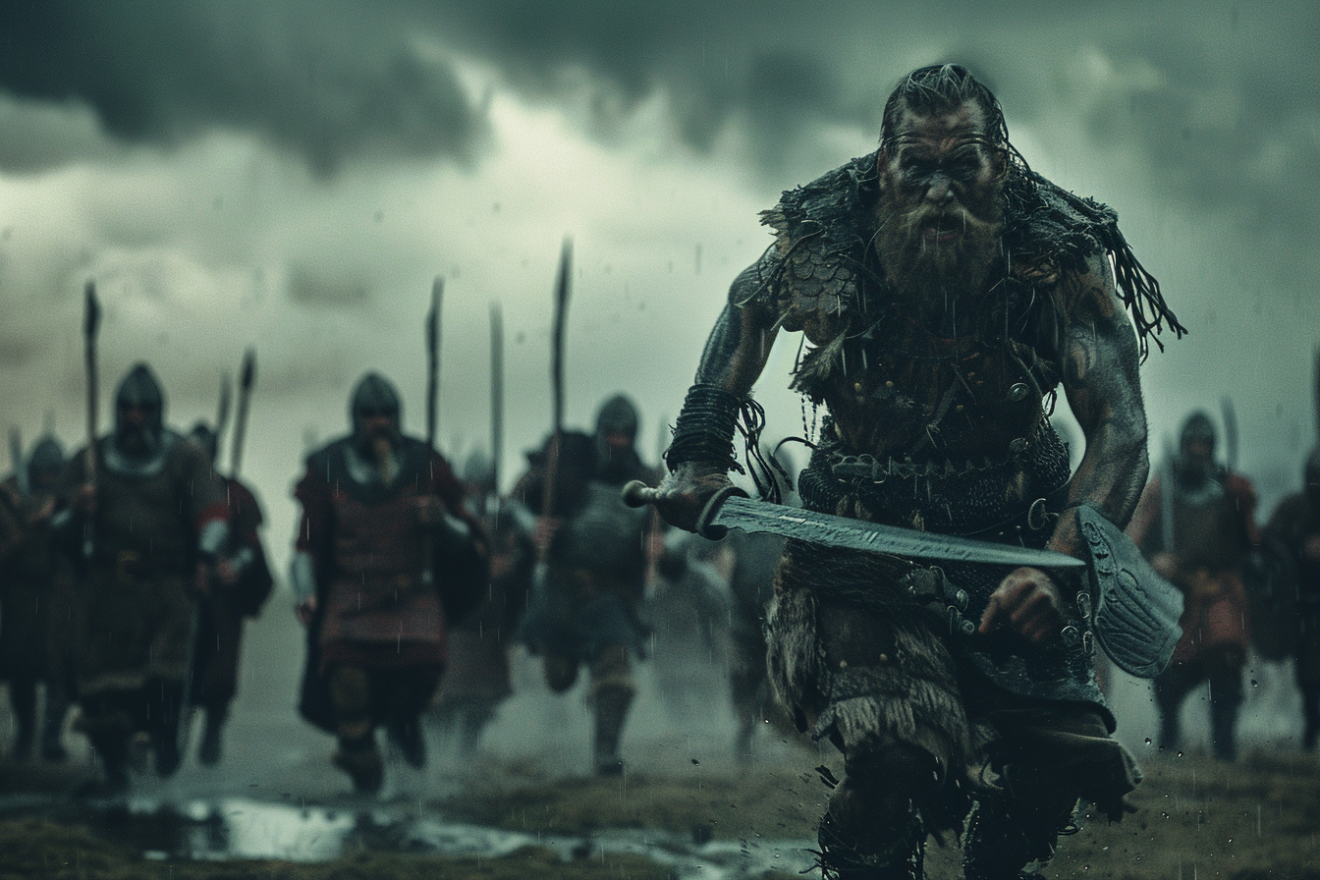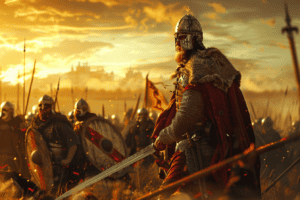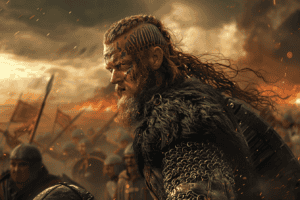Viking berserkers were some of the most feared warriors of their time. They were known for their ferocity and reckless abandon in battle, often fighting in a trance-like state induced by ingesting hallucinogenic drugs. However, despite their fearsome reputation, Viking berserkers faced high mortality rates in battle.

One reason for their high mortality rates was their lack of armor. Viking berserkers typically fought in only bear skins, leaving them vulnerable to enemy attacks.
Additionally, their reckless fighting style often put them in harm’s way, making them easy targets for enemy soldiers.
Their berserker rage, while effective at instilling fear in their enemies, also made them difficult to control on the battlefield. This lack of discipline and coordination made them vulnerable to enemy attacks and often led to their downfall.
Historical Context of Viking Berserkers

Legendary Sagas and Historical Accounts
Viking berserkers were legendary warriors who fought with incredible ferocity and were feared by their enemies. According to the sagas, berserkers were said to have been able to enter a state of trance or frenzy, which allowed them to fight with superhuman strength and endurance. They were also known for their distinctive dress, which included animal skins, often that of a bear, and horned helmets, as depicted in Tissø, West Zealand.
However, some of the accounts of berserkers in the sagas are likely exaggerations or outright myths. For example, the idea that berserkers were shapeshifters is not supported by historical evidence [1].
Berserkers in Viking Society
Despite the legendary status of berserkers, they were a real part of Viking society. Berserkers were considered a special class of warrior, and were often employed by kings and jarls [2]. For example, Olav Haraldsson (St. Olav) is said to have put berserkers in front of his own phalanx at the Battle of Stiklestad in the year 1030.
The use of berserkers in battle was not without controversy, however. According to the medieval Icelandic law code known as Grágás, berserkers were considered outlaws and were not allowed to enter the homes of others without permission. This suggests that berserkers were seen as a potential threat to society when not in battle.
Berserker Battle Tactics and Equipment

The Role of Berserkers in Warfare
Berserkers were a group of Viking warriors who fought in a trance-like state known as the “berserkergang.” They were often used as shock troops in battle, charging into the enemy lines and causing chaos and confusion. Their reputation for strength and aggression made them a valuable asset to any army.
Armaments and Protective Gear
Berserkers were known for their distinctive animal skin clothing, which was believed to give them the strength and ferocity of the animal they wore. They often fought without armor, relying on their agility and speed to avoid blows.
However, they did carry shields, which they would use to block incoming attacks.
In terms of weaponry, berserkers favored edged weapons such as axes and swords, as well as clubs for close combat. They were skilled fighters and could hold their own in battle, but their lack of armor and protective gear made them vulnerable to injury and death.
The Berserkergang: Frenzy and Transformation

Berserkers were a special class of Viking warrior who possessed exceptional fighting skills and a unique mindset. The word “berserker” comes from the Old Norse “berserkr,” which means “bear-shirt.” This is because the berserkers were said to wear animal skins, often that of a bear, into battle. They were known for their ferocity and fearlessness in combat, but they also faced high mortality rates.
Psychological and Physical Effects
The most ambiguous element of Viking berserkers is the berserkergang, their famous battle rage, which sees them become impervious to weapons and fear. According to some accounts, they would howl like wolves, bite their shields, and foam at the mouth.
It is believed that they achieved this state through the use of drugs or other mind-altering substances. Some scholars suggest that the berserkergang was a form of self-induced hysteria, while others believe it was a trance-like fury induced by hallucinogens.
One of the most commonly cited substances used by berserkers was the hallucinogenic mushroom Amanita muscaria. This mushroom is known for its psychoactive properties, and it is believed that the berserkers would consume it in order to achieve their frenzied state.
Other substances that have been suggested as possible sources of the berserkergang include henbane, hyoscyamus niger, and alcohol.
Cultural and Religious Significance
The berserkergang was not just a psychological weapon for the Vikings, but also had cultural and religious significance.
The berserkers were closely associated with the god Odin, who was said to have the power to shape-shift into a wolf or a bear. Some scholars believe that the berserkers saw themselves as shapeshifters, and that they believed they could take on the powers of the animals whose skins they wore.
The berserkergang was also seen as a way to tap into the divine power of the gods. The Vikings believed that the gods could grant invulnerability to those who were worthy, and it is possible that the berserkers saw their frenzied state as a way to gain this protection.
The Decline and Prohibition of Berserkers

Changing Warfare and Societal Shifts
As Viking society shifted from small-scale raiding to larger, organized armies, the role of berserkers became less relevant. The introduction of new weapons and tactics, such as the use of archers and cavalry, made the berserker’s close combat style less effective.
Additionally, with the rise of Christianity, the glorification of violence and the pagan traditions associated with berserkers became less acceptable.
Legal Bans and the End of an Era
The decline of berserkers was also due to legal bans and the enforcement of new laws.
In 1015, Jarl Eiríkr Hákonarson outlawed berserkers in Norway. Later, King Harald Fairhair banned berserkers and other pagan practices in an effort to consolidate his power and establish a unified kingdom. The Icelandic Law Code, Grágás, also prohibited berserker behavior. Those found guilty of practicing it were subject to fines and even outlawry.
The end of the Viking Age also signaled the end of berserkers.
The last known reference to berserkers in literature is in a skaldic poem from the 13th century. Medieval Icelandic law codes also ceased to mention berserkers after the 12th century. Today, the National Museum of Denmark displays the Golden Horns, which are believed to have belonged to a berserker.
Some scholars have suggested that the use of hallucinogenic mushroom Amanita muscaria may have contributed to the berserker’s reputation for wild, uncontrollable behavior. However, this theory is debated, and there is little concrete evidence to support it.










Add Comment